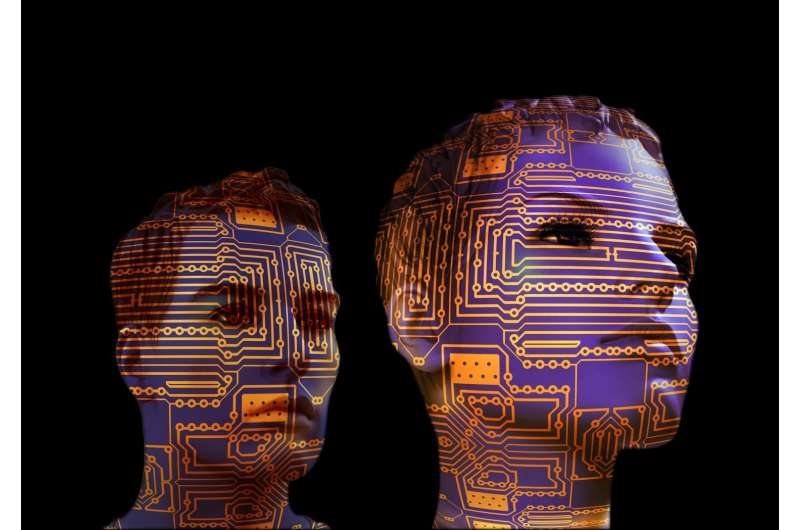December 1, 2016 feature
One day, many ideas: Future of Mind 2016 illuminates NYC (Part 1)

(Phys.org)—The shape that human cognition may take over the coming next half-century has become increasingly difficult to foresee. Moreover, accelerating advances in science, mathematics, computing, and culture – including Artificial General Intelligence, Machine Consciousness, Synthetic Creativity, Mind Uploading, Exocortical Cognition, and other ever-more exotic ideas – have dramatically transformed the very conception of what we refer to as mind.
Following the Human Level AI Conference 2016, and sponsored by Humanity+ and The New School, the one-day Future of Mind Symposium 2016 held at The New School in New York City – moderated by Dr. Ben Goertzel (Humanity+) and Prof. Ed Keller (The New School) – delved into this brave new space through interactive dialogs between expert panelists and audience members. The conference began with introductory remarks from the moderators, during which Goertzel said "One thing I've gotten more and more respect for as I've done more things, learned more things and explored more possibilities is how completely ignorant we are about the real nature of mind and of reality…. I've become more and more convinced that as we build intelligent engineered systems, as we upgrade our brains with technology, as we become more and more networked together on the planet between human beings, synthetic biological systems, engineered computing and communication systems – as all this advances we're going to understand that mind and intelligence and the self-organization of matter go far beyond anything that our history gives us the capability to conceive."
In the first Morning Session panel, Cosmo Harrigan, Natasha Vita-More, Amy Li, and (by videolink] Peter Watts discussed The Future of the Individual: AGIs, Cyborgs, Uploads, and… in which they addressed the "epistemological horizons of the individual and collective mind, and rethinking the ethics and politics of mind beyond individual or gender."
Harrigan – a cross-disciplinary internet entrepreneur and researcher in deep reinforcement learning – reviewed what he described as "a rich variety of methods" that could lead to human-analogous Artificial General Intelligence, including traditional symbolic systems based on logic and reasoning; biologically-inspired systems; and those that start with a mathematical formalism and work towards approximating a universal intelligence.
Founder of Dance4Healing and a partner for Stanford Cancer Supportive Care Program, Li is leading the trend of telehealth into physical rehabilitation space. Rooted in neuroscience, Dance4Healing is a social platform connecting dance teachers to patients, using artificial intelligence and behavior design to recommend personalized music and dance, dance buddies and patient groups based on real-time emotion and health data, alleviating mental and physical pain, and improving quality of life – including a profoundly beneficial effect on cancer, dementia and other serious health problems.
Vita-More, Chair of Humanity+, Program Champion of Graduate Studies at the University of Advancing Technology, and author in the areas of humanity's future, emerging technologies, and radical life extension – and whose breakthrough research demonstrated post-vitrification (that is, after exiting a state in which living cells are cooled to cryogenic temperatures without using ice) memory recovery in C. elegans – stressed the importance of being involved in legislation because, she noted, it defines "the rules that govern us and sets the stage for our future."
Watts, a biologist and award-winning science fiction author – whose novel Blindsight has become a core text in diverse undergraduate courses ranging from philosophy to neuropsych, and is said to have found its way into neuroscience laboratories – presented an unsurprisingly iconoclastic neuroscience-based view of on consciousness focused on the brain's self-organizing, self-directed learning capabilities. "The brain is really good at reconfiguring itself….It doesn't really matter whether or not you crack the secret of consciousness, it doesn't matter if you can precisely mimic the corpus callosum" – a 10 cm-long flat bundle of nerve fibers that connects the brain's right and left hemispheres. "To paraphrase Jeff Goldblum in Jurassic Park, our brains will find a way. Give them an interface, and chances are they'll figure it out on their own."
During the panel discussion, a contested topic was whether or not an AGI could, and perhaps more importantly should, have emotions. While Li's view were that emotive AGIs were important since they would be able to better understand humans, Ben Goertzel opined that "It's not obvious that you want AGIs to have human-like emotions" – a position shared by Vita-More, who stressed that we would not benefit from an AGI that possessed human emotions like anger and jealousy.
© 2016 Phys.org



















